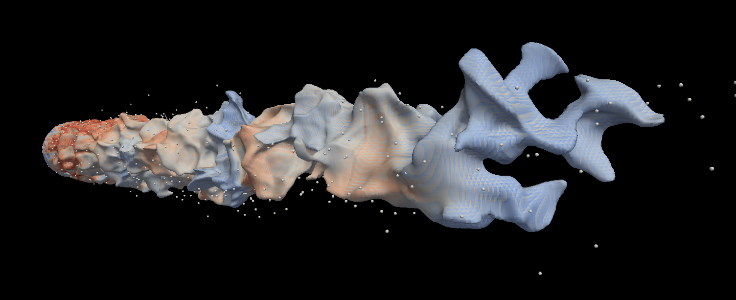CEC3H

The research work carried out in project 3H serves to fulfil the objectives of the overall project "Operational Flexibility and Fuel Flexibility". Operational flexibility is critically influenced by the stability limits of combustion, the prediction of which is still a challenge. Fuel flexibility requires the safe design of burners that can operate with both gaseous and liquid fuel. The objectives of sub-project 3H, which represents the further development of the research work successfully carried out within project 1F of the 1st phase, are defined from the necessities and challenges presented.
The model for the combustion of liquid fuels and liquid fuel/water emulsions developed within project 1F is able to calculate the heat release during the combustion of liquid fuels under specification of the droplet diameter and velocity distribution during adiabatic combustion. From this it can be seen that several important aspects, which are crucial for the use of the model in the design process, are not yet considered. The first aspect concerns the specification of the distribution of droplet characteristics, which in the current version of the program must be taken from experimental data. The second aspect concerns the non-consideration of heat losses, which, however, are of essential importance for the prediction of the flame stability and the emissions. In addition, the model was only validated on the basis of the combustion of kerosene (existing in-house measurements), because the experimental results with diesel and diesel/water emulsions are not yet available.
The sub-project 3H ties in with these questions and aims to develop a tool which can be used in the design of a gas turbine combustion chamber. On the one hand, the atomisation process is to be reproduced by an empirical model and, on the other hand, the influence of heat losses on the heat release characteristics is to be recorded. In addition, further partial aspects, such as the droplet-wall interaction or the field distribution of the fuel/water ratio (BWV), which play an important role in the real process, are taken into account by suitable partial models.

